Payment & Warranty
We accept payments via Visa, Mastercard, Apple Pay, Google Pay, PayPal and Direct Bank Deposit.
Most LCS Fashions products have a 6 month warranty period, covering materials and workmanship when used under normal conditions and for the purpose intended.
Warranty doesn't extend to normal wear and tear or damage resulting from improper care or neglect (including scratches, rips, water damage, marks, etc.)
Generally acceptable, or common usage of the particular item. We do not replace things like scratched buckles or scuffed belts from normal usage.
If have a warranty issue, please email a photo of the defective area, purchase date or info, product model/colour and your complete name with current shipping address.
Email lcsfashion.oz@gmail.com
Quality You Can See
Full grain leather is the highest quality grade of leather money can buy. It comes from the top layer of the hide and includes all of the natural grain. It is more expensive for manufacturers to buy and more difficult for them to work with. This is reflected in the cost to the consumer.
Top grain leather is the second highest grade of leather and has the outermost layer of the hide removed. This difference makes the leather thinner and more workable for the manufacturer, which is reflected in the price compared to full grain leather.
The natural surface of full grain leather is unique - it tells a story and reveals natural imperfections, marks, and even light brands in the surface. Full grain leather is extremely strong and durable, as the natural grain contains the strongest fibers in the hide. While strong and durable, full grain leather remains extremely breathable, resulting in less moisture from prolonged contact.
The natural grain from the top surface of top grain leather is sanded away, which removes imperfections and blemishes. After sanding away the natural grain, top grain leather is imprinted with an imitation grain to give it a more uniform look. If uniform is what you’re looking for, then you’re in luck with top grain leather. The downside is, by sanding off the natural grain, they’ve sanded off the strongest fibers in the hide.
As full grain leather ages, rather than wearing out, it burnishes and beautifies, developing a much sought-after patina and unique character that cannot be easily duplicated.
Truly, the more you use it, the better it looks and feels.
The difference in top grain leather is a finish coat applied that provides protection against stains that would otherwise sink right into full grain leather.
However, the refinishing process of top grain leather greatly reduces the leather’s breathability, and also prevents the leather from developing a natural patina over time.
About the Leather
The grain is the top outermost layer of the hide. It’s the part you see. This layer of the hide is also the strongest, its fibers are very dense and tightly “woven”.
And that makes sense if you think about a cow in the wild. It needs the outer layer to be tough to contend with predators, fences, etc.
The junction is where the fibers start to loosen up a bit and the grain transitions to the split or suede part of the hide.
The split as it is often referred to is essentially suede. Its softer, looser fibers make up the bulk of the hide. It is also the weakest part of the hide. But it’s what happens from here that matters most.
Once the top layer of the hide has been altered, it is no longer full grain leather.
This is also where the semantics start to get a little dicey. Once the top layer has been altered, you could end up with top grain, corrected grain, or genuine leather.
The term top grain leather usually refers to the top layer of the cowhide that has been minimally altered, perhaps sanded down a bit to hide imperfections. Some people may tell you that top grain leather is the same as full grain, but in my experience that is simply not true.
Here’s one way you can tell. Anyone selling top grain leather is happy to have you believe that it’s the same as full grain leather. But anyone selling full grain leather makes sure to let you know it’s full grain leather and they don’t market it as top grain. There are no grain enforcement police.
But it seems that industry practice is that top grain leather means at least something has been done to the hide, usually some sanding of the surface.
So why does this matter? Two reasons. First, sanding the hide makes it weaker.we are making belts and wallets to last a very long time, we don’t want to weaken the hide. Second, the leather loses some character. With full grain leather, you can see the leather surface in its natural state - imperfections and all.
For example, if the cow ran into a barbed wire fence, you may see a little scar on the hide. Full grain leather also allows the natural marbling, texture and variety of color in the hide to come through fully.
Genuine leather is the catchall term for anything that is technically leather. Over the years, this definition has gotten so stretched that it is almost meaningless for consumers. It’s also perhaps the best-kept secret in the industry.
Unfortunately, the vast majority of consumers still believe genuine leather is the “best” or at least a premium product that warrants a higher price. The opposite is often the case.
Again, genuine leather just means “technically leather”. But think about that. What is leather? It means cowhide, right? Wrong. Awhile back, the government changed the definition of genuine leather to include any animal’s hide. That means pig leather, goat leather, etc. also qualify as “genuine leather”. It also means that discarded scraps of leather reconstituted into a bag form can qualify as a “genuine leather bag”. So you could take scraps of pig hide, sand down the surface, emboss it, layer it with chemicals, and reformat it into a bag, jacket or wallet and call it “genuine leather.”
Surprised?
Now, one other thing to note. Full grain leather is also genuine leather by definition. But again, someone selling full grain leather won’t market it as genuine leather because they know the huge difference.
So, to recap, full grain leather is the best because it hasn’t been altered. It’s the full hide, not sanded or corrected or weakened in any way. Because of this, hide selection is important, as is the tanning process itself.


